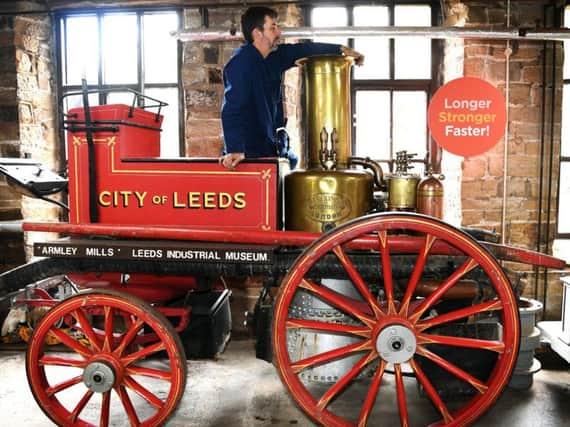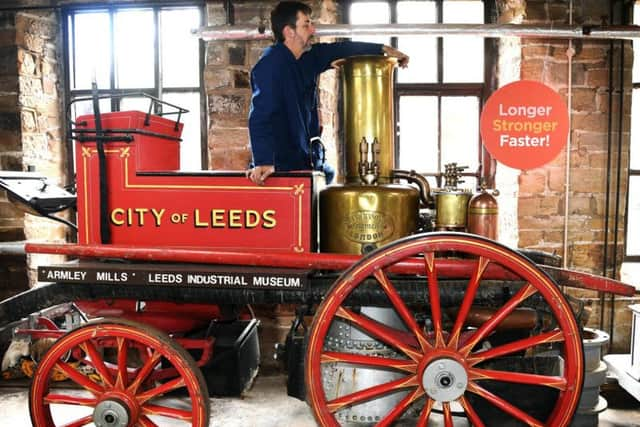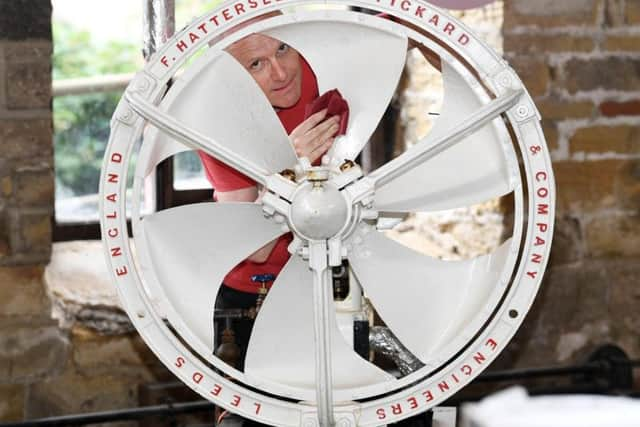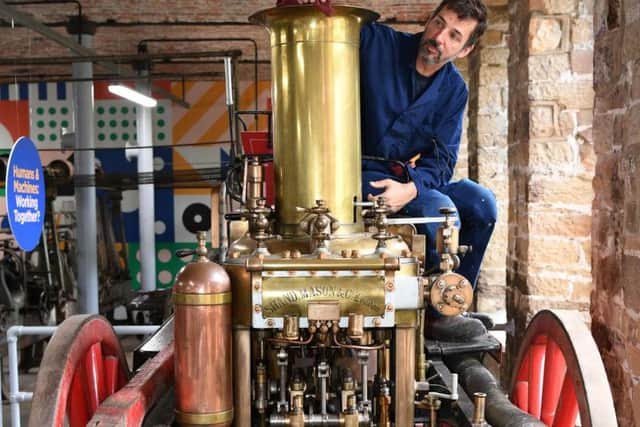This 1891 fire engine is star attraction in new Leeds Industrial Museum exhibition


And almost 130 years since it was first in service, Leeds Industrial Museum’s mechanised masterpiece will still be firing visitors’ imaginations as one of the stars of a new permanent exhibition celebrating the history of the engines in Leeds.
Made for the City of Leeds by the famed Shand Mason and Co in 1891, the majestic fire engine, complete with a dazzling boiler made from Yorkshire iron, was employed at the old


Gipton Fire Station.
Advertisement
Hide AdAdvertisement
Hide AdAble to raise steam on its way to a fire and needing only two firefighters to operate it, its “double vertical” design became the most successful fire engine of its time.
The vintage fire engine is one of a number of feats of local engineering which will be on display as part of the museum’s new Power House exhibition, which opens to the public this
week.


The driving force behind centuries of industry and innovation in Leeds, an impressive array of historic hardware will take centre stage as the museum examines the evolution of
engines through the ages.
Other exhibits will include a large hydraulic pump made by Berry of Leeds for the Columbia Gramophone Co. which used it for pressing records.
Advertisement
Hide AdAdvertisement
Hide AdAlso on display will be a Hattersley Pickard Fan which was used in times gone by in the traditional Russian steam rooms at Bramley Baths.


John McGoldrick, Leeds Museums and Galleries’ curator of industrial history, said: “Engines have been the heartbeat of some of the biggest and most important innovations of the last
few centuries and their rapid evolution and development has gone hand-in-hand with major advances in fields such as science, production and travel.
“In Leeds, those machines became a cornerstone of the city’s status as global industrial powerhouse, enabling Leeds to become one of the world’s leading lights in the production
of wool, textiles and locomotive building.
Advertisement
Hide AdAdvertisement
Hide Ad“Those accomplishments, spurred on by the power of engines, left a legacy which can still be seen all around us today, not only in our history and heritage but in the city’s modern-
day reputation as a centre for engineering excellence.”
Visitors to Power House will also get the chance to see Fiona Elizabeth, the museum’s vintage mill engine in action.
The engine takes its name from Fiona Lister, descendant of Steward Tempest, owner of Armley Mills in the early 1900s, and Elizabeth Tempest, daughter of the last owner of the
mill, which today houses Leeds Industrial Museum.
After being employed in a flour mill in Kent and at a dye works in nearby Lower Wortley, at the end of her working life the engine fell into disrepair but from 1980, a team of volunteers
and museum staff spent around 4,700 hours restoring the machine to working condition.